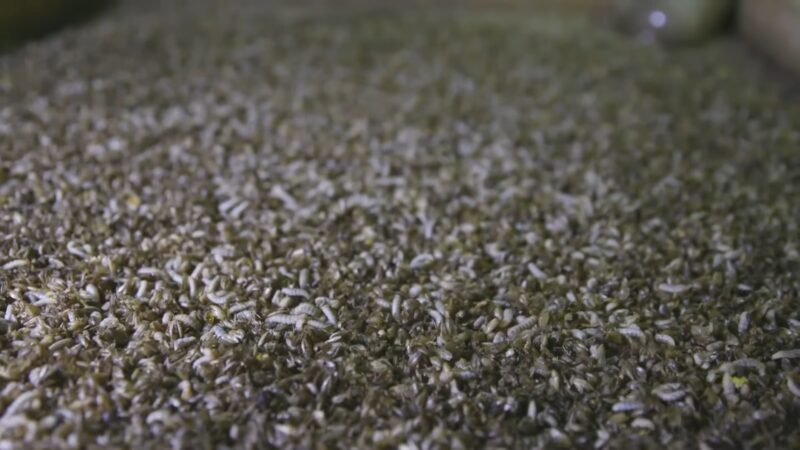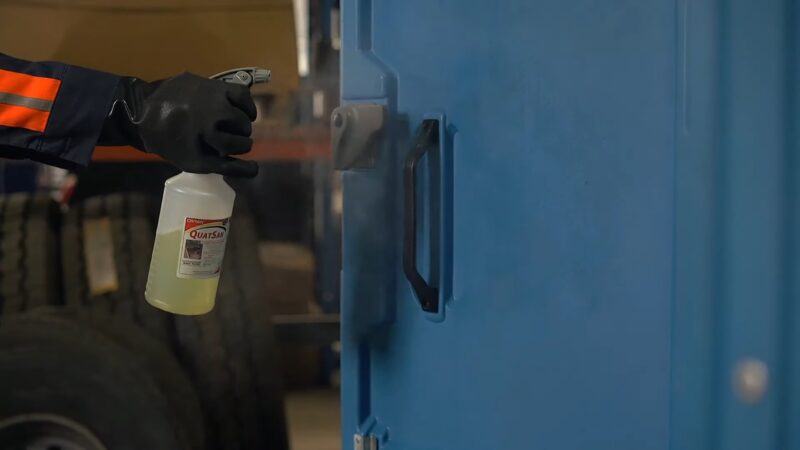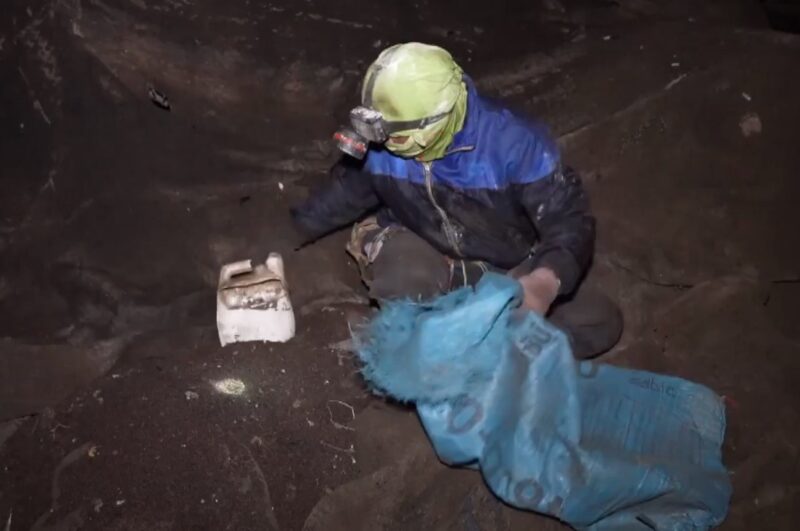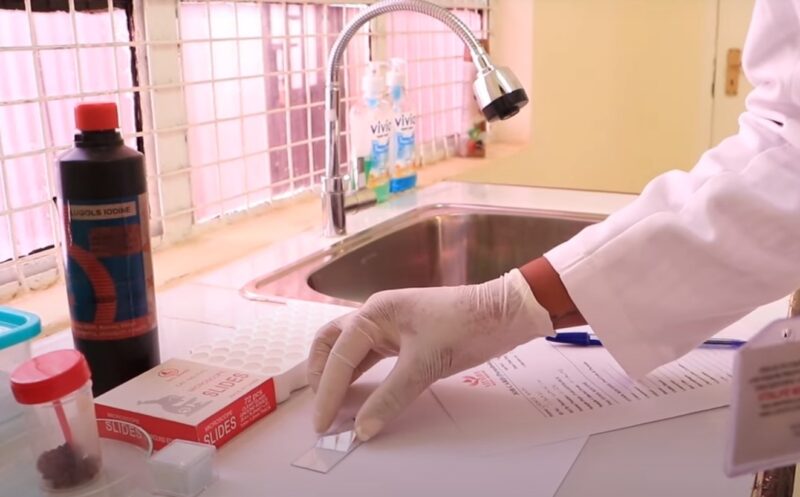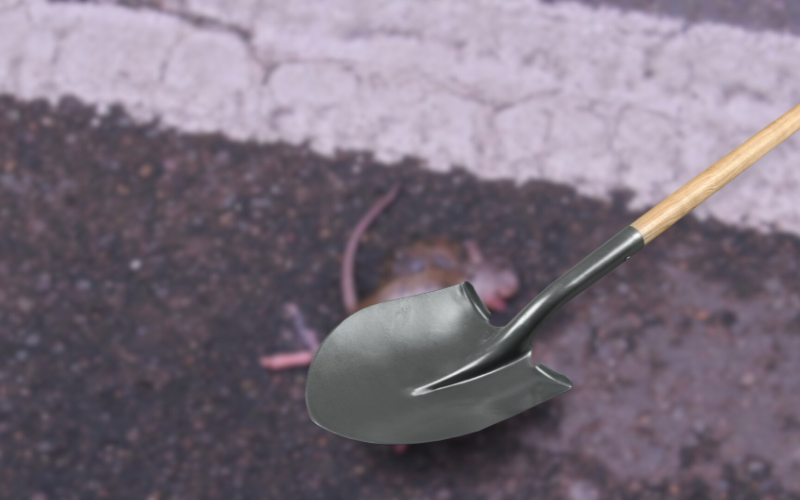In the vast spectrum of careers, there are those that are glamorous, those that are fulfilling, and those that are downright disgusting. Yet, these “disgusting” jobs are often essential, playing a crucial role in our society. From dealing with the deceased to handling waste, these jobs require individuals with a strong stomach and a resilient spirit.
Any job where you’re making money is worth it, right? Well, after reading about some of these disgusting jobs you may disagree. History is full of jobs that were downright gross. Even in modern times we have a few jobs that would make even people with strong stomachs want to hurl. And what happens when you hurl? Well, there’s a job for that too.
If you’ve got a strong stomach and aren’t grossed out easily, keep reading for the most disgusting jobs of all time.
1. Maggot farmer
| Salary | Work Hours | Hazards | Education |
|---|---|---|---|
| $35,000+ | Varies | Exposure to maggots and decomposing matter | None |
But maggots are also great lures for fishing. They are bright whiteish and squirm, making them attractive to fish. Maggot farmers are the ones that raise maggots in order to sell to fisheries and for other agricultural reasons.
Maggot farming is popular in modern times, particularly in advanced agricultural and fishing economies. It is still a job today, used for a variety of purposes beyond just fishing.
When was the job most popular?
In modern times, particularly in advanced agricultural and fishing economies.
Is it still a job today?
Yes – for a variety of uses beyond just fishing.
2. Chicken sexer
| Salary | Work Hours | Hazards | Education |
|---|---|---|---|
| $20,000+ | Varies | Handling live chickens, potential for disease transmission | None to Certification Class |
However, chickens don’t have external reproductive organs. That’s where the job of chicken sexer comes in. It’s a nasty job that requires squeezing a chicken’s backside so its butt opens up – from there, the chicken sexer looks for the distinctive internal features of a male versus female chicken.
Chicken sexing has been a job throughout the modern history of chicken farming. It is still a job today, particularly in larger chicken farms that want to know the sex of the chickens immediately.
When was the job most popular?
Throughout modern history of chicken farming.
Is it still a job today?
Yes – particularly in larger chicken farms that want to know sex immediately.
3. Portable toilet cleaner
| Salary | Work Hours | Hazards | Education |
|---|---|---|---|
| $18,500 – $20,499 | Varies | Exposure to human waste, potential for disease transmission | None |
You’ve seen them before – the porta-potty at an event that is overflowing, positively disgusting, and smelling worse than anything you’ve ever seen before. You’ve probably even muttered about how you feel bad for whomever has to clean that thing when the event is over.
Well, that’s what a portable toilet cleaner does for a living. They have to deal with the variety of disgusting things that people do in porta-potties and clean up the mess for the next event.
The job of a portable toilet cleaner became popular in the 20th century and continues to this day. They now have tools and hoses to help make the job easier.
When was the job most popular?
In the 20th century to modern times.
Is it still a job today?
Yes – though they have tools and hoses to help make things easier.
4. Gong Farmer
| Salary | Work Hours | Hazards | Education |
|---|---|---|---|
| N/A | 9pm-5am | Exposure to human waste, potential for disease transmission | None |
As gross as it sounds, people used to throw their waste into the streets. That meant food waste, human waste, and excess water from the house… all in the street. Eventually, that waste collected somewhere in the low ground, in what was called a privy or cesspit.
The gong farmer was responsible for digging it all up, so the cesspits didn’t overflow, and finding somewhere else to put the waste. Sounds like fun, doesn’t it?
Gong farming was a job from medieval times to the late 1600s. It is no longer a job today due to modern sewage systems.
When was the job most popular?
Medieval times to the late 1600s.
Is it still a job today?
No – modern sewage systems have replaced this profession.
5. Pee collector
| Salary | Work Hours | Hazards | Education |
|---|---|---|---|
| $39,437 | Varies | Exposure to animal urine, potential for disease transmission | High School |
When you’re caring for animals, one of the biggest questions to answer is if they are sick. Unfortunately, they can’t talk to you about what hurts and what doesn’t, so scientists and animal husbandry professionals test many things – including urine.
The pee collector’s job is to, as the name suggests, collect urine from animals by stimulating them to urinate into a cup. Sounds like drug testing gone wrong.
The job of a pee collector was most popular in agricultural societies from the 1800s to today. It is still a job today, especially on farms.
When was the job most popular?
In agricultural societies in the 1800s to today.
Is it still a job today?
Yes – if you work on a farm, chances are you’ll know a pee collector or find yourself having to do it at some point.
6. Manure inspector
| Salary | Work Hours | Hazards | Education |
|---|---|---|---|
| $47,290 | 7am-5pm | Exposure to animal waste, potential for disease transmission | None |
Manure and fertilizer, in case you didn’t know, is made from animal poop. Sometimes there are other chemicals or things added to it, but animal poop contains nutrients that help crops grow.
Naturally, that would need to be inspected, like any item used in farming, for quality. That’s what a manure inspector does – checks the poop out to make sure it’s good enough for farm land.
Manure inspection has been a job throughout history in agricultural societies. It is still a job today, as manure and fertilizer is a multimillion dollar global industry. Technology helps with the inspection process.
When was the job most popular?
Throughout history in agricultural societies.
Is it still a job today?
Yes – manure and fertilizer is a multimillion dollar global industry, so inspections have only increased. Technology helps, though.
7. Barnyard breeder
| Salary | Work Hours | Hazards | Education |
|---|---|---|---|
| $25,000-$69,000 | Varies | Handling live animals, potential for disease transmission | Animal Biology and Care |
Animal breeding is big business. Whether livestock that is destined to produce byproducts, like female chickens laying eggs, animals bred for meat, or animals bred for sport or enjoyment, there’s a lot going on. And when you need animals to breed, you sometimes have to help them – that’s what a barnyard breeder does.
They “help” the males and then use that to artificially inseminate females, resulting in a faster breeding process.
Animal breeding has been a job throughout history. It is still a job today, with tools and other methods available to assist.
When was the job most popular?
Throughout history.
Is it still a job today?
Yes – though there are tools and other methods available to help.
8. Vomit collector
| Salary | Work Hours | Hazards | Education |
|---|---|---|---|
| $25,000 | Varies | Exposure to human vomit, potential for disease transmission | None |
Amusement parks are famous for their thrill rides and roller coasters. Some have become infamous for making people throw up.
Unfortunately, when that happens, somebody has to clean it up – that’s how the role of the vomit collector came to be. They make sure the ride is spick and span every time – and ready for the next person to hurl. As humans continue to seek thrills that make us puke, this role likely won’t be going anywhere.
The job of a vomit collector became popular in modern history and continues to this day. Technology and better cleaning products make it a much easier job now.
When was the job most popular?
Modern history up until current times.
Is it still a job today?
Yes – though technology and better cleaning products make it a much easier job.
9. Chamber maids
| Salary | Work Hours | Hazards | Education |
|---|---|---|---|
| £21,567 | 10am-3pm | Exposure to human waste, potential for disease transmission | None |
Before modern plumbing and toilets, people used buckets underneath chairs with holes in the middle. Unfortunately, somebody had to clean out the buckets – that’s what a chambermaid did.
Often a young girl (sometimes as young as 10 or 11), chamber maids would go into the bedrooms of their employers and empty the chamber pots whenever they were used. This could mean multiple times a day per person, making it a pretty gross job.
The job of a chambermaid was most popular from Medieval times all the way to the 1800s. It is no longer a job today due to modern toilets.
When was the job most popular?
From Medieval times all the way to the 1800s.
Is it still a job today?
No – modern toilets thankfully don’t require chamber maids.
10. Clinical waste disposal worker
| Salary | Work Hours | Hazards | Education |
|---|---|---|---|
| $83,653 | Varies | Exposure to clinical waste, potential for disease transmission | Healthcare Waste Management |
Unfortunately, many people die in hospital settings. Or, if they don’t die, there are tragedies that cause loss of limbs or surgeries that remove growths.
All of this – technically defined as “clinical waste” – has to be dealt with. That’s what a clinical waste disposal worker does. They take everything, from body parts to tumors, and have to process it, break it down if necessary, and then dispose of it in a way that won’t cause a public health outbreak.
The job of a clinical waste disposal worker has been a job from the 1800s to modern times. It is still a job today, likely with more sanitary conditions than in the past.
When was the job most popular?
From the 1800s to modern times.
Is it still a job today?
Yes – though conditions are likely more sanitary than in the past.
11. Hazmat diver
| Salary | Work Hours | Hazards | Education |
|---|---|---|---|
| $49,602 | 10 to 12 hours daily | Diving into hazardous materials, potential for disease transmission | High School or GED |
When someone commits murder or is trying to hide something, they often think one of the best places is in a vat of sewage. Few people want to spend time near sewage and the chemicals will often degrade the materials anyway.
Hazmat divers make a job of jumping into sewage. When there’s a murder or another crucial item to look for, they dive into raw sewage to take a look.
The job of a hazmat diver has been a job in modern history up until current times. It is still a job today, with technology increasing to help keep the divers safer.
When was the job most popular?
Modern history up until current times.
Is it still a job today?
Yes – thankfully technology has increased to help keep the divers safer.
12. Forensic entomologist
| Salary | Work Hours | Hazards | Education |
|---|---|---|---|
| $47,882 | 40 hours weekly | Exposure to decomposing bodies, potential for disease transmission | Ph. D. in Entomology |
Ever forgotten about some food in the fridge or on the counter and realized insects have made it their home? As gross as it is, the same thing happens to humans when they die – many types of insects live in and eat decomposing human remains.
In the case of murder and other crimes, forensic entomologists bring the body to their labs and study the insects they find to potentially identify both the cause of death and how long the person’s been dead for. Talk about a double whammy!
The job of a forensic entomologist has been a job in modern history up until current times. It is still a job today, with technology and scientific advancements aiding in the process.
When was the job most popular?
In the 20th century to modern times.
Is it still a job today?
Yes – and is a growing career (no pun intended).
13. Crime scene cleaner
| Salary | Work Hours | Hazards | Education |
|---|---|---|---|
| $29,996 to $34,399 | on-call all hours of the day | Exposure to crime scenes, potential for disease transmission | on-the-job training |
Filed under “gross, but somebody’s gotta do it,” we have crime scene cleaners. Unfortunately, after a crime scene is processed, it needs to be turned back to its previous state so the space can potentially be used again.
Whether a bloody shootout on the street, a breaking and entering gone wrong, or another crime, these folks are the ones that make the place look presentable again. They don’t come in until police are done any necessary investigations, though.
The job of a crime scene cleaner has been a job in modern history up until current times. It is still a job today, with advancements in technology and practices making the job more efficient and safe.
When was the job most popular?
Throughout most of modern history.
Is it still a job today?
Yes – with better cleaning products now.
14. Sewer cleaner
| Salary | Work Hours | Hazards | Education |
|---|---|---|---|
| $22,020 to $85,400 | Varies | Exposure to sewage, potential for disease transmission | None |
Most popular in India and other countries that don’t yet have fully functioning automatic sewer systems, sewer cleaners are often going chest-deep in sewage to remove growths, kill rats or other sewer creatures, and clean the sides of the sewers to avoid blocks.
Unfortunately, this is a very dangerous job, with many sewer cleaners dying in the sewers or contracting illnesses.
The job of a sewer cleaner has been a job from the 1800s to modern times. It is still a job today, with technology and equipment making the job safer and more efficient.
When was the job most popular?
Most popular in countries with limited sewage systems.
Is it still a job today?
Yes – though mostly in emerging economies and developing countries like India.
15. Embalmer
| Salary | Work Hours | Hazards | Education |
|---|---|---|---|
| $11,000 – $15,499 | 40 hours a week, | Exposure to dead bodies, potential for disease transmission | Mortuary science |
Humans begin to decompose within a day after dying. Within 3-5 days, they begin to emit odours as the body breaks down. Unfortunately, this is not enough time to have an open casket wake or funeral before things start to turn bad.
That’s where embalmers come in. They prepare bodies for funerals and burial by filling the body full of preservative chemicals. This delays the decomposition process so the family of the deceased can pay their respects.
The job of an embalmer has been a job throughout history. It is still a job today, with advancements in technology and practices making the job more efficient and safe.
When was the job most popular?
In the 19th, 20th, and 21st centuries.
Is it still a job today?
Yes – often a service provided through funeral homes.
16. Slaughterhouse worker
| Salary | Work Hours | Hazards | Education |
|---|---|---|---|
| $30,000 – $40,000 | Varies | Exposure to blood and guts, potential for disease transmission | None |
When buying meat, the step between the farm and your table is often the slaughterhouse. There, slaughterhouse workers take dead animal carcasses and remove skin, fur, or features, remove internal organs, and cut up the meat into recognizable shapes and sizes for sale.
It’s a bloody, gory job that many people don’t think about as they are enjoying their steak or chicken.
The job of a slaughterhouse worker is a necessary part of the food chain. It is still a job today, with regulations in place to ensure the safety and welfare of the workers.
When was the job most popular?
Throughout modern history.
Is it still a job today?
Yes – and is growing on an industrial scale due to high demands for meat.
17. Whale snot collector
| Salary | Work Hours | Hazards | Education |
|---|---|---|---|
| £70,000 | N/A | Exposure to whale snot, potential for disease transmission | College |
People who care for land animals have multiple ways to test them for health. First, you can observe them and see if behavior changes. But you can also draw blood or test urine. With whales, it’s a bit more difficult – you don’t have access to their urine or blood, so medical professionals and scientists test snot left behind as whales swim.
It’s the whale snot collector’s job to gather as much snot as possible from a whale for testing. Doesn’t sound like a good way to spend a Saturday.
The job of a whale snot collector is a unique one, often carried out by researchers studying whales. It is not a common job, and the specifics can vary greatly.
When was the job most popular?
Modern history up until current times.
Is it still a job today?
Yes – and is growing as people care more about ocean animal health.
18. Proctologist
| Salary | Work Hours | Hazards | Education |
|---|---|---|---|
| $488,227 | 10-11 Hours a day | Exposure to human rectum, potential for disease transmission | Medical Doctor or M.D degree |
The human body is a wonderful thing, but many parts of it are pretty gross. Unfortunately, even the gross parts need care. And that’s what a proctologist helps with – one gross part in particular, being inside your butt. They check for potential cancer issues (particular colo-rectal and prostate cancer), among other things.
If you’re having any trouble in the.. ahem.. lower part of the body, you’ll be grateful the profession exists, even if it is uncomfortable for everyone involved.
The job of a proctologist has been a job in modern history up until current times. It is still a job today, with advancements in technology and practices making the job more efficient and safe.
When was the job most popular?
Modern history up until current times.
Is it still a job today?
Yes – it’s a critical part of the medical field.
19. Guano collector
| Salary | Work Hours | Hazards | Education |
|---|---|---|---|
| N/A | N/A | Exposure to bat or bird droppings, potential for disease transmission | Natural resources degree |
Manure – animal excrement (poop) – is one of the best ways to offer nutrition to crops. Bat excrement in particular, called guano, is some of the most nutrient-rich manures in the world and thus is highly sought after. Since bats don’t live all over the world in public areas, guano can be difficult to track down.
Guano collectors are the people who have to go into bat habitats, often caves (making it gross AND dangerous), to find the ‘guano’ to sell to farmers and other buyers.
The job of a guano collector is not a common one, but guano (bat or bird droppings) is often collected for use as fertilizer. The specifics of the job can vary greatly.
When was the job most popular?
Modern history up until current times.
Is it still a job today?
Yes – it’s part of the multimillion dollar fertilizer industry.
20. Poop stirrer
| Salary | Work Hours | Hazards | Education |
|---|---|---|---|
| $46,870 | N/A | Exposure to feces, potential for disease transmission | None |
Many medical tests involve testing poop. That in and of itself is enough to make some people gag. It can be a gross job. But modern technology allows for much of the testing to be done without touching the actual poop, so researchers are spared.
The challenge, though, is moving the poop from its container from the patient into the medical testing devices then “stirring” it until it’s the right consistency to test. That’s what a poop stirrer does – their whole job is stirring poop like ice cream, getting it from lumpy to smooth.
When was the job most popular?
20th and 21st centuries.
Is it still a job today?
Yes – it’s part of the medical testing world.
Now that you know about the grossest jobs – What about jobs that don’t exist anymore?
21. Roadkill Collector
| Salary | Work Hours | Hazards | Education |
|---|---|---|---|
| $72,000 | on-call all hours of the day | Exposure to dead animals, potential for disease transmission | None |
The job of a roadkill collector has been a job in modern history up until current times. It is still a job today, with local municipalities often employing individuals for this role.
When was the job most popular?
As for when the job was most popular, it’s hard to pinpoint a specific time period. However, one source mentions a Roadkill Collector named Charles Brannon who was active and making a significant income from the job in Pennsylvania in 2001. This suggests that the job has been in existence and actively filled for at least the past few decades.
Is it still a job today?
Yes, the job of a Roadkill Collector is still a role today. According to the search results, there are still job postings for this role on job search websites. The job involves collecting animals that have been hit by vehicles on roads. The specifics of the job can vary greatly, but it often involves working for local municipalities or private companies.
22. Odor Judge
| Salary | Work Hours | Hazards | Education |
|---|---|---|---|
| $37,500-$113,000 | Varies | Exposure to unpleasant odors | Bachelor’s degree in chemistry |
The job of an odor judge has been a job in modern history up until current times. It is still a job today, particularly in industries related to personal hygiene products.
When was the job most popular?
As for when the job was most popular, it’s hard to pinpoint a specific time period. However, one source mentions that odor judges have been used for testing products like deodorants, which suggests that the job has been in existence and actively filled for at least the past few decades.
The popularity of the job likely correlates with the development and testing of new products that require odor assessment.
Is it still a job today?
Yes, the job of an Odor Judge is still a role today. According to the search results, there are still job postings for this role on job search websites. The job involves assessing the smell of various products or substances, often for companies that produce items like deodorants, perfumes, or food products.
The specifics of the job can vary greatly, but it often involves working in a laboratory setting and requires a good sense of smell.
Bottom Line
While these jobs may seem repulsive to many, they are indispensable in maintaining the balance and functioning of our society. Each of these roles, despite their unpleasant aspects, serves a crucial purpose.
Moreover, they often offer rewarding compensation, making them attractive for those who can look beyond the initial disgust. So, the next time you come across a roadkill collector or a guano collector, remember the essential service they provide and if possible make them feel valued. After all, every job has its own unique challenges and rewards, and these are no exception.
Hello, my name is James Willett. I am a marketing veteran, with decades of experience under my belt. At one point, I decided to share my experience with others, especially those who are making baby steps in marketing. Therefore, I decided to join fine folks at PulseBluePrint.com where I share my insights on all sorts of marketing. I hope you will find my insights useful.


